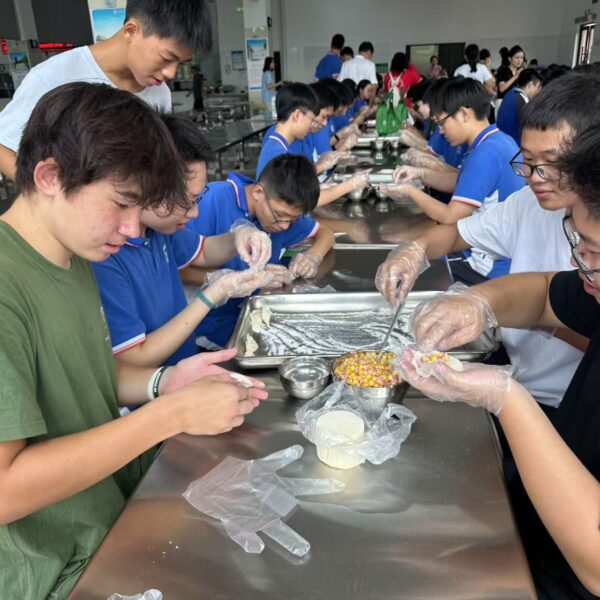Leadership Development for High School Students: A Comprehensive Guide
Table of Contents
Why Leadership Development Matters
High school is more than a place to earn grades — it’s the training ground for the next generation of leaders. Leadership development during these years is crucial because it builds confidence, teaches collaboration, and helps students create impact beyond the classroom. Colleges and scholarship committees consistently highlight leadership as a top quality they look for in applicants. But true leadership is not just a title on a résumé; it’s the ability to inspire others, solve problems, and leave behind measurable results.
The Foundations of Leadership Development
Self-Leadership
Before students can lead others, they must learn to lead themselves. This means practicing discipline, setting achievable goals, and balancing academics with extracurricular commitments. A student who organizes their study schedule while also coaching younger peers in a club demonstrates the self-leadership that colleges admire.
Communication Skills
Effective leaders articulate ideas clearly, listen actively, and adapt their message to different audiences. Debate teams, Model UN, and even class presentations are excellent platforms to sharpen public speaking and persuasion.
Emotional Intelligence (EQ)
Strong leadership is grounded in empathy and the ability to navigate conflict. A student who helps resolve a dispute between team members, ensuring everyone feels heard, is practicing EQ in action.
Practical Pathways to Develop Leadership in High School
Student Organizations and Extracurriculars
Joining clubs and sports teams provides the first opportunity to practice leadership. But impact matters more than titles. A club president who revitalizes membership or a treasurer who doubles fundraising impact shows stronger leadership than someone who simply holds a position.
Athletics and Team Leadership
Sports naturally teach teamwork, resilience, and discipline. Captains learn to motivate teammates, manage setbacks, and build team culture. Even without a captain’s badge, athletes can lead by example in training and competition.
Service-Learning and Community Projects
Community projects transform students from participants into problem-solvers. For example, launching a tutoring program that improves middle school test scores demonstrates initiative and measurable impact.
Academic and Research Opportunities
Leadership also appears in intellectual spaces. Coordinating a science fair team, publishing in a youth research journal, or assisting in a lab teaches project management and scientific communication.
Entrepreneurship and Innovation
Launching a small business, coding a new app, or organizing a local hackathon cultivates risk management, execution, and adaptability — all vital leadership traits.
Leadership Development Programs: Accelerators for Growth
Why Join a Leadership Development Program
Self-driven projects are powerful, but they can be overwhelming without guidance. A structured leadership development program provides:
Expert mentorship from educators and professionals.
Peer networks that challenge and inspire.
Frameworks for project design and execution.
Tangible outcomes that can be showcased on applications.
Spotlight: Global Philanthropy Leadership (GPL) Program
The GPL Program exemplifies how structured programs accelerate growth. Unlike traditional pre-college courses that focus solely on academics, GPL emphasizes social impact and global leadership. Students participate in workshops, design service initiatives, and collaborate across cultures. They practice real-world leadership by tackling issues such as sustainability, education equity, or community development.
What makes GPL stand out is its focus on outcomes. Students don’t just discuss leadership — they create measurable projects, reflect on challenges, and walk away with stories and experiences that enrich college essays and recommendation letters. GPL helps students move from “peer leadership” in clubs to community leadership with broader, lasting influence.

Advanced Leadership Development Strategies
Mentorship and Networking
Finding mentors — whether a teacher, coach, or community leader — helps students gain perspective and guidance. Networking with peers in leadership programs also creates lasting support systems.
Reflection and Feedback Loops
Leadership growth happens when students pause to analyze outcomes. Journaling, feedback sessions, and project retrospectives help refine future strategies. For instance, a failed fundraising event becomes a success story if the student can articulate what went wrong and how they improved next time.
Building Systems, Not Just Projects
True leadership isn’t about one-time events. Students should aim to create sustainable systems. Training successors, documenting processes, and building continuity ensure that their initiatives last even after they graduate.
A 90-Day Leadership Growth Plan
Days 1–30: Clarify Your Cause and Build Foundations
Goal: Identify your leadership focus and set up the basics.
Choose a focus area: Pick one issue or passion — e.g., improving mental health awareness, tutoring underserved peers, or starting a recycling program.
Define your “why”: Write a short mission statement (2–3 sentences) about why this matters to you.
Research and benchmark: Look at what others are doing in this area (online or locally). Identify gaps you could fill.
Find a mentor: Approach a teacher, coach, or community leader who can check in with you once a week.
Output: A one-page “project charter” that includes your cause, mission, goal, and initial plan.
Days 31–60: Build a Team and Launch a Pilot
Goal: Move from planning to action through a small-scale test.
Recruit 2–5 peers: Choose teammates with complementary skills (organizer, communicator, designer, researcher).
Assign roles: Give each member clear responsibilities (e.g., outreach, logistics, social media, data tracking).
Run a pilot project: Example:
Organize one workshop for 20 classmates on your chosen issue.
Launch a one-week recycling challenge with measurable participation.
Hold a fundraiser with a modest goal ($100–$200).
Track results: Record attendance, money raised, hours volunteered, or other impact metrics.
Collect feedback: Ask participants what worked and what didn’t.
Output: A pilot project report (1–2 pages) with data, photos, and lessons learned.
Days 61–90: Scale, Showcase, and Reflect
Goal: Grow the initiative, highlight results, and capture your leadership story.
Expand the project: Scale your pilot to a larger audience (e.g., from one workshop to three, from $200 raised to $1,000).
Build partnerships: Collaborate with a local nonprofit, school administration, or student council for greater impact.
Document impact: Create a simple dashboard or infographic summarizing results (number of participants, funds raised, outcomes achieved).
Present publicly: Share your work in a school assembly, community newsletter, or social media post.
Reflect deeply: Write a one-page reflection answering:
What was my biggest challenge?
How did I grow as a leader?
What would I do differently next time?
Output: A portfolio-ready package with project summary, visuals, testimonials, and a reflection essay.
👉 Pro Tip: If students run this plan within a leadership development program like GPL, they’ll get structured mentorship, feedback loops, and cross-cultural collaboration — making each stage stronger and more polished.

FAQs: Leadership Development for High School Students
Do I need a title like “president” to be considered a leader?
No. Admissions officers value impact more than titles. Running a project or mentoring others can demonstrate leadership just as effectively.
How can introverted students develop leadership?
Introverts often excel at reflective and supportive leadership, such as project management, research coordination, or mentoring. Leadership is about influence, not personality type.
What’s the difference between extracurricular involvement and leadership development?
Extracurriculars show participation; leadership development shows initiative and measurable impact. For example, playing on a team is involvement, but organizing training schedules is leadership.
Should I join a leadership development program or start my own project?
Ideally both. Programs like GPL provide structure and mentorship, while personal projects give ownership and authenticity. Combined, they create the strongest narrative.
Build, Lead, Reflect, Repeat
Leadership development in high school is not about chasing positions but about creating meaningful impact. Students who combine self-leadership, communication, emotional intelligence, and real projects grow into confident, capable leaders. Structured opportunities, like the GPL Program, give students the framework and mentorship to take their leadership to the next level.
By building skills, practicing through projects, and reflecting on their growth, high school students can leave a lasting legacy — and carry their leadership into college and beyond.
By submitting this form, you are consenting to receive marketing emails from: IvyMax, 41111 Mission Blvd., Suite 200, Fremont, CA, 94539, https://ivymax.com/. You can revoke your consent to receive emails at any time by using the SafeUnsubscribe® link, found at the bottom of every email. Emails are serviced by Constant Contact
Interested in our program?
Complete the form below and we’ll quickly respond with detailed information, and answers to all your questions!

